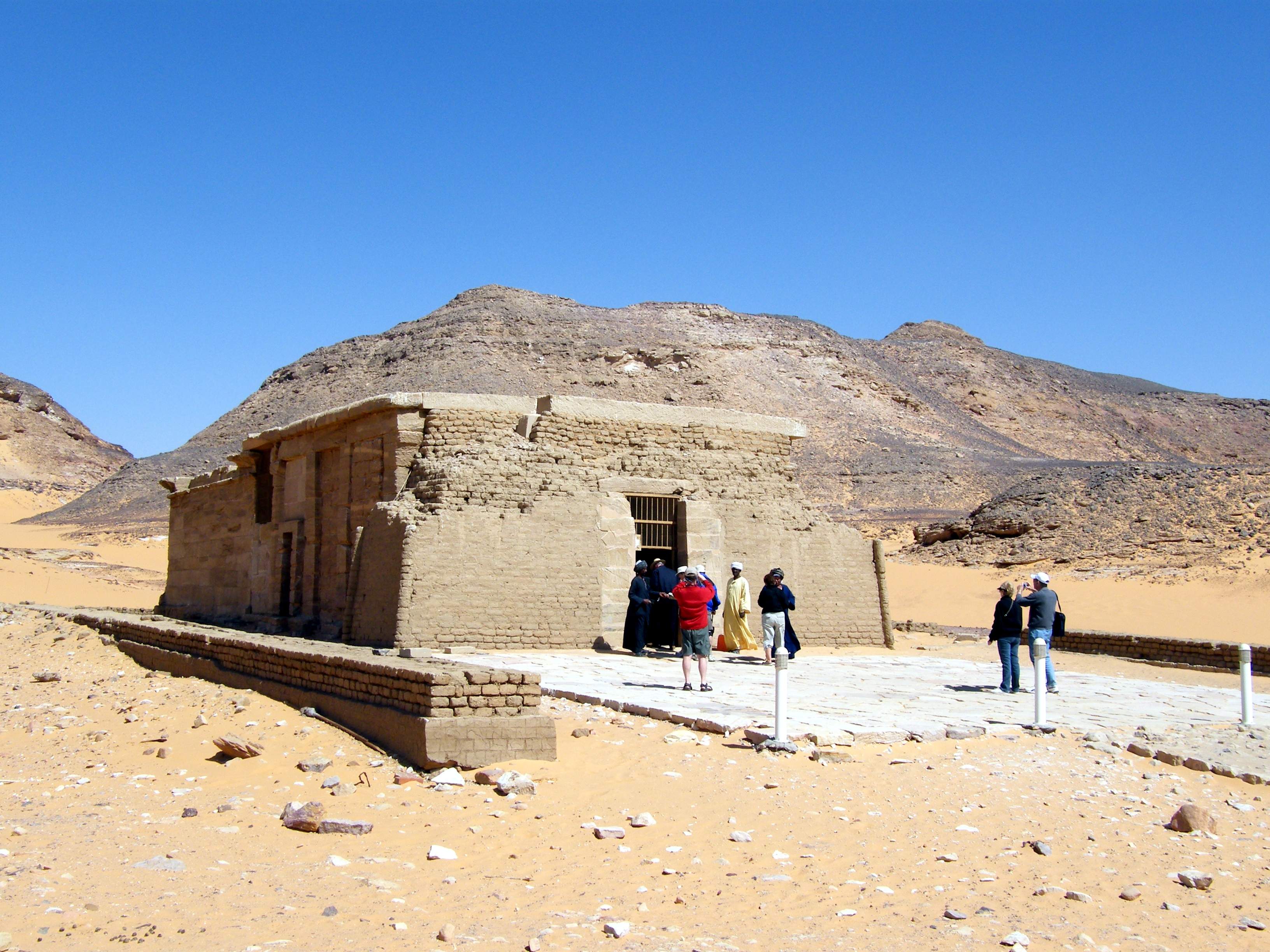The Temple of Amada, the oldest Egyptian temple in Nubia, stands as a testament to ancient civilization’s grandeur. Pharaoh Thutmose III erected it during the 18th Dynasty, and later, Pharaoh Amenhotep II enhanced it. The temple’s relocation in the 1960s to save it from the rising waters of Lake Nasser is a remarkable feat. It showcases intricate carvings and inscriptions, offering insights into Egypt’s religious practices and political history.
Get your dose of History via Email
Historical Background of the Temple of Amada
The Temple of Amada, a jewel of ancient Egyptian architecture, dates back to the New Kingdom. Pharaoh Thutmose III, a mighty warrior king, originally built it. His successor, Amenhotep II, later embellished it. The temple’s walls narrate the tales of their military triumphs and religious devotions. In the 1960s, due to the construction of the Aswan High Dam, a massive rescue operation took place. Experts meticulously dismantled and relocated the temple to its current location, safeguarding it from the Nile’s encroaching waters.
Its discovery by European travelers in the 19th century marked a significant moment in Egyptology. The temple’s inscriptions and artwork have since provided valuable historical data. The temple has witnessed various historical events, including the reigns of subsequent pharaohs who left their marks. It has also been a site of worship, with evidence of continued use over centuries.
Historically, the Temple of Amada was not just a religious site but also a political symbol. It served as a testament to the pharaohs’ power and divine right to rule. The inscriptions within tell of diplomatic relations and military campaigns, particularly those against the Nubians and Asiatics. These records are crucial for understanding the political dynamics of the era.
Over time, the temple fell into disuse and was eventually abandoned. It lay hidden for centuries until its rediscovery. The temple’s isolation helped preserve its artwork from the vandalism that befell many other ancient sites. Today, it stands as a valuable source of historical and cultural knowledge.
The Temple of Amada’s significance extends beyond its age. It was the scene of important religious ceremonies and royal decrees. The inscriptions inside include the earliest known record of a solar eclipse in Egypt. This event, dated to 1207 BCE, is a key chronological marker for historians.
About the Temple of Amada
The Temple of Amada, a masterpiece of ancient craftsmanship, boasts sandstone walls adorned with vibrant reliefs and hieroglyphs. Its construction involved precise stone-cutting techniques, reflecting the advanced skills of New Kingdom artisans. The temple’s layout follows a traditional Egyptian design, with a pylon entrance leading to a sequence of halls and sanctuaries.
Upon entering, visitors are greeted by a courtyard that leads to a hypostyle hall. This space, once filled with columns, set the stage for religious rituals. Beyond the hall lies the inner sanctuary, the heart of the temple where the divine statue once resided. The walls here are a canvas of religious iconography, depicting gods and pharaohs in sacred communion.
The temple’s construction materials have withstood the test of time. The sandstone blocks, quarried from nearby sources, have preserved the intricate carvings. The architectural highlights include the vivid reliefs that depict deities such as Amun-Re and Ra-Horakhty. These images not only served a religious purpose but also reinforced the pharaohs’ divine authority.
One of the temple’s unique features is its roof, which allowed for the play of light and shadow, creating a dramatic effect during ceremonies. The builders’ understanding of celestial movements is evident in the temple’s alignment. It was designed to harness the sun’s rays, illuminating the inner sanctuary on specific dates.
The preservation of the temple’s artwork is remarkable, considering the region’s harsh climate. The colors, although faded, still hint at the original splendor. The carvings, too, remain sharp, allowing modern visitors to appreciate the artistry of ancient Egypt’s master builders and craftsmen.
Theories and Interpretations
The Temple of Amada has sparked numerous theories and interpretations over the years. Scholars have pondered its religious significance, suggesting it was a focal point for worshiping key deities. The prominence of Amun-Re in the temple’s inscriptions hints at the god’s importance during the New Kingdom.
Some mysteries surround the temple, such as the purpose of certain architectural features. Researchers have speculated on the meaning behind the unique reliefs and their placement. The temple’s alignment with celestial events has led to theories about its role in astronomy and timekeeping.
Historians have matched the temple’s inscriptions to known historical records, confirming the accuracy of ancient Egyptian chronology. These inscriptions have also shed light on diplomatic relations, such as treaties and marriages, between Egypt and neighboring powers.
Dating the temple has involved various methods, including analyzing the style of its artwork and inscriptions. Carbon dating of organic materials found on-site has provided additional clues. These techniques have helped confirm the temple’s age and the timeline of its construction and modifications.
The interpretations of the Temple of Amada continue to evolve as new discoveries are made. Each piece of evidence adds to the understanding of its role in ancient Egyptian society. The temple remains a subject of fascination for both scholars and the public alike.
At a glance
Country; Egypt
Civilization; Ancient Egyptian
Age; Constructed during the 18th Dynasty, approximately 1550-1292 BCE
Conclusion and Sources
Reputable sources used in the creation of this article include;

